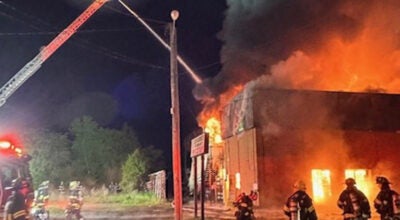‘Best part is the children’
Published 5:49 pm Monday, September 7, 2009
If nothing else, Sherry Bailey and Sheila Whitehead can agree on two things: They started driving a school bus to give themselves more time with their own children, but they wound up loving everyone else’s children, as well.
“I wanted to stay home with my children,” Sheila Whitehead, an 18-year bus veteran, said. “Snow days, Christmas Easter, you get them all off.”
Sherry Bailey was a stay-at-home mother until her children graduated. Then, she got bored.
“It’s a good job,” she said. “You get time in between if you have appointments.”
Both women agree that driving the 40-foot vehicles provides the ideal hours to stay at home with children and handle household responsibilities. However, neither woman anticipated that she would be able to connect with so many other children in the process.
“You get to know them,” said Bailey, who drives routes for Lakeland High School and Southwestern Elementary School, as well as an activity route for King’s Fork High School.
“The best part is the children,” Whitehead, who drives in the Whaleyville area, added. “If you’ve been there a while, you get to watch them grow up. You get big hugs at the gas station when you run into them.”
School bus drivers go through extensive training and Department of Motor Vehicles testing to be able to do their jobs. Drivers must obtain their commercial driver’s license and pass four different tests: general knowledge, air brakes, passenger and school bus. After that, they must keep up to date on changes in the law and additional training, which is offered by the school division throughout the year.
The buses, which average about 7-8 miles per gallon of diesel fuel, require safety checks every time they are put on the road. Drivers must give the bus a visual inspection to ensure the lights and tires are working and there is no body damage. They check under the hoods to ensure the brakes, belts, compressor and water pump are working properly, and make certain the fluid levels are topped off. Even the inside of the bus is checked for cleanliness, a level floor and seats that are firmly bolted to the floor.
When the buses carry upwards of 14,000 children on 166 routes per day, there’s no room for mistakes.
“Before you head out anywhere, you want to make sure there isn’t anything you’re aware of that would cause an accident,” Whitehead said.
All of the training and safety checks are worth it, the pair said, to be able to serve the children.
“Some of these kids get up in the morning and get themselves dressed, and we’re the first face they see in the morning,” Bailey said.
The children usually don’t present a problem, the woman said. They named students changing seats while the bus is moving as the most common offense.
“If you don’t respect those kids, they’re not going to respect you,” Bailey said. “I know most of their parents, and they know I know their parents.”
The drivers and Lonnie Reavis, the transportation coordinator for the schools, urged parents to go over the bus rules in the student handbook with children and let them know what’s expected of them.
“Go over those rules and regulations with the kids,” Reavis said.
As the head of the bus drivers, Reavis is excited about the start of the school year.
“I have the unique opportunity to work with a great staff and a great selection of bus drivers,” Reavis said. “They take pride in what they do, and it shows.”






